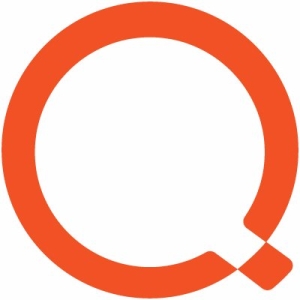What is our primary use case?
We move M365 workloads. We migrate Teams chats. We migrate SharePoint data. We migrate OneDrive data, and we migrate people's mail.
How has it helped my organization?
It supports multiple workloads—such as Teams, Exchange, SharePoint, and OneDrive—all from one place. This is important for us. I would not use it otherwise. They have one or two competitors that I assume perform multiple workloads concurrently.
It provides data security for tenant-to-tenant migrations, but I do not deal with that. If they can do DCC, that is good enough for me. The only thing I am worried about is the security. They have got SOC 1 and SOC 2. They have got every single thing my customers ask for. They are transparent about their data processing. I am reasonably certain that I know where the data is going, and it is not sticking around, so I am not worried about that.
The fact that it is ISO-certified is not important to me, but it is important to my customers. They ask about this from time to time. For me, it is just a tool, like a toolbox, like a hammer or a saw. I know what it does, but every now and then, one out of ten customers—their lawyers or their compliance department—asks a bunch of questions. I just point them to all the certifications. They can decide whether they trust it or not. As far as I am concerned, they have got everything covered.
We could realize its benefits right after deployment. It moves pretty quickly. Once you get it connected to two things and you link the things, it is pretty obvious that it is going to do exactly what you want. I used the old product back when it required a SQL Server. It took a month to install, whereas now, I can start working in days or even hours if I have the right privileges and I am not fighting for the infrastructure and trying to get the customer to give me resources and install all the things in their environment and get connected to the Exchange Server. It is all SaaS now.
It supports the migration of Microsoft Teams, including Teams chats, when it comes to our customers’ collaboration. It is the most difficult thing for them to migrate. It does not come across as the cleanest, and I understand why. There is a limitation of the API, but it is an important functionality. It is a necessary evil. When customers want it, I have to deliver it, but I make every attempt to scope it down. They want all the chats for all the time, which is not practical, so I tell them that I can give them the last 15 days or 30 days, and then they can use some kind of archiving utility on the source side to capture everything for compliance reasons, but I cannot bring across everything. The tool is not made to bring across everything. So, it is important, but it needs to be used appropriately. It is not like mail where they can ask to give them absolutely everything. Quest On Demand Migration moves everything, but it is not always obvious where they are. That is the problem, but it is not their fault. They have done everything possible to bring things across. A common thing is that people are looking for recorded meetings, which are in the OneDrive store of the user who initiated the recording of the meeting. Before you migrate the data, you can go into a Teams chat and click on a meeting, and it will start playing the meeting no matter where you are and no matter which participant you are. Post-migration, when it is on the other side, you have to be the person who recorded the meeting because it comes across through the OneDrive migration, so it is hard for it to recreate the exact chat state with all its full feature functionality on the other side. I understand that there is a limitation of the API. For us, it is just about training the users. We tell them that if something is absolutely important, then back it up themselves. We tell them where to expect things because not everything comes across as clean as they might hope.
We have a 99.9% success rate with migrations. Everything comes through as we would expect. When it does not, we open a support case. It might indicate one giant file in somebody's email that did not come across because there is a 25 MB limitation. Everything is explainable. Every support case I have opened has explained if there is any throttling going on, if there is an outage, or if there is some type of problem. No support case that I have opened has gone into a black hole. They are pretty responsive. I am not worried about that.
The users are aware of migrations because we do a lot of high touch. We are giving them a new laptop. We are moving the laptop from one domain to another, and it takes a while for their mail to download on the new Outlook client or a new profile. There is always some type of indicator. It is a matter of how disruptive it is or how much time it takes, and that is where we come in and try to make that as minimal as possible. We also handle more complex migrations where other products are involved, such as two-factor authentication, MFA, Duo, Okta, and things like that, and the authentication might not be purely on Azure. Whenever we do that, there is a lot more hand-holding or what we call a white glove type of service. So, they are never totally unaware, but we try to keep it minimal. If we can get them in and out in fifteen minutes, and they are working, that is awesome.
What is most valuable?
You can batch up large groups. You can tell it to move everything for 200 people, and then it just goes. Once you get things set and configured, it is pretty easy. I can hand it off to people more junior to me who are less trained on the product, and they can be successful.
What needs improvement?
It does what you think it would do in terms of the dashboard, but we are typically migrating a subset of the users, and it always shows us the macro view. If there was a way to scope it down to just the users that are in scope, that would be more useful.
It would be more useful if I could scope the dashboard. I would like to be able to scope the users that I want to see to a much smaller list. When I am looking into a tenant with 35,000 accounts, and I am only moving 2,000 of them, I wish that the guys had been smarter about the discovery, and I could have only discovered those accounts, but there is not too much to complain about. They even have a button on the console saying Send An Idea, so it is hard to fault, but I wish they could do discovery through a pop-up dialogue.
I would like a drag-and-drop matching of accounts and mailboxes. I would like to be able to map multiple mailboxes from multiple sources to one mailbox.
For how long have I used the solution?
I have been using their products on and off for 10 to 15 years. I have been using Quest On Demand for two years. It was six months after it started existing. It is a very new product for them.
What do I think about the stability of the solution?
It has not slowed us down. It happens every now and then. Most of it is throttling on the tenant or the customer side. A couple of times, I have seen some announcements of instability or problems, but fortunately, we were not doing migrations at that time. Coincidently, just an hour ago, they communicated that they are having stability problems with SharePoint migrations. They just sent out a worldwide announcement, but we are not doing SharePoint migrations, so I am not too worried about that. For mailboxes and everything else, it is pretty cool. It works very well.
What do I think about the scalability of the solution?
We do not do tens of thousands, but I am confident if we needed to, we could do it. We are in the low thousands. I am comfortable with it. I see everything I would expect to see.
How are customer service and support?
They are very responsive. Whether I open a case through support@quest.com or click on Generate Case in the tool, I get somebody who owns the case within minutes. Before I open a case, they recommend articles that fix the problem, so I do not even need to open a case. It is pretty good. I have also got a connection through our partner. I have never had service problems, but if I did, I know I would have the support I need.
I am using their regular support. Premier support would be something for which you need to pay, and I do not think any of my customers pay for that. They just buy regular licenses.
I would rate their support a nine out of ten. They can always be slightly better, but I do not know what they can do better.
How would you rate customer service and support?
Which solution did I use previously and why did I switch?
I tried to use another solution once, but I could not even get it to authorize, so I gave up. It was surprising. I have just used other Quest products that provided a similar service, but they are all end-of-life products. They were on-premises products. Other than scripting around it, I have not come across other products.
I do not use other solutions from Quest for auditing, recovery, group management, or license management. I am not on the infrastructure side. I do more security, but I know that other parts of my company do use other Quest products.
I have not used Microsoft native migration tools. I know they have got some things, but they are not viable at this point.
How was the initial setup?
The deployment is pretty easy. We have a more difficult time getting the customers to provide credentials. Quest requires certain privileges, and sometimes, it is just a matter of explaining to the customer why they have to give these privileges to the product. It is a strict requirement of the API from Microsoft. It has nothing to do with Quest. It just requires some education. There are pretty good guides from Quest explaining the security model.
For us, the migration environment is 50/50. Sometimes, we have to do AD migrations, which require the on-premise agent for AD sync, and sometimes, we just do the SaaS. We only do O365, so it is 50/50. We have on-premises and cloud migrations.
What about the implementation team?
We are an integrator. We are consultants. We do it all on behalf of clients.
For deployment, you can have one person if that person knows what he or she is doing. We usually have two people for deployment and training. You have four eyes, and you can prevent mistakes.
What's my experience with pricing, setup cost, and licensing?
It is more than fair for what you get.
Which other solutions did I evaluate?
We did not evaluate other options. We have got a partnership with them. The pricing is very transparent. I know who my partner manager is. I know some of the sales guys. I can get quotes and I can buy directly from the website, but that is not the only way it would work better. Sometimes, we need to talk to the sales guys. We are getting closer and closer to them, so it is getting easier and easier to turn things around.
What other advice do I have?
My advice to new users would be to be patient. In the training material, one of the very first slides says to be patient. The price for SaaS is that some aspects of it are slower than the on-premises solution. In the on-premises solution, the Quest server is sitting right next to the infrastructure servers, so you can measure things in milliseconds or in seconds. If something takes longer than a minute, you are like, "What is going on?" With the SaaS solution, the default cycle time on something like an AD sync is about 15 minutes. The first time, you are not sure if it is ever going to end, but you need to understand what you have got to point it at, and you need to scope things as tightly as you can. After that, be patient. It will do exactly what you tell it to do. Take the training whether or not you think you need it.
I would rate Quest On Demand Migration a nine out of ten.
*Disclosure: PeerSpot contacted the reviewer to collect the review and to validate authenticity. The reviewer was referred by the vendor, but the review is not subject to editing or approval by the vendor. The reviewer's company has a business relationship with this vendor other than being a customer: Integrator









